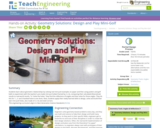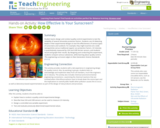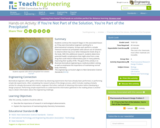
Experiments, experimental variables, and experimental controls are discussed.
A free CK-12 account is required to view all materials.
- Subject:
- Science
- Material Type:
- Lesson
- Provider:
- CK-12 Foundation
- Date Added:
- 11/15/2023

Experiments, experimental variables, and experimental controls are discussed.
A free CK-12 account is required to view all materials.

Introduces the scientific method and presents the difference between a theory and a law.
A free CK-12 account is required to view all materials.

Role of investigations in science and the steps of the scientific method.
A free CK-12 account is required to view all materials.

Teach language, vocabulary and listening comprehension with Celebrity Vocab clips! [2:14]

If you are a crime scene investigation (CSI) fan, then you will love this site! You get to be the detective by examining the evidence, viewing the crime scene, dusting for fingerprints, interviewing the suspects, and solving the crime.

Students experiment with various ways to naturally dye materials using sources found in nature—roots, leaves, seeds, spices, etc.—as well as the method of extracting dyes. Then they analyze various materials using statistical methods and tackle an engineering design challenge—to find dyes that best suit the needs of a startup sustainable clothing company.

Using observations and scientific experiments to test hypotheses.
A free CK-12 account is required to view all materials.

This study guide summarizes key points about the role of observations and experiments in scientific investigation. Includes a few questions to check for understanding.
A free CK-12 account is required to view all materials.

How can Earth move through space without our feeling its motion? This video segment adapted from NOVA answers this question by dramatizing one of Galileo's thought experiments. [2:42]

Students work as engineers and learn to conduct controlled experiments by changing one experimental variable at a time to study its effect on the experiment outcome. Specifically, they conduct experiments to determine the angular velocity for a gear train with varying gear ratios and lengths. Student groups assemble LEGO MINDSTORMS(TM) NXT robots with variously sized gears in a gear train and then design programs using the NXT software to cause the motor to rotate all the gears in the gear train. They use the LEGO data logging program and light sensors to set up experiments. They run the program with the motor and the light sensor at the same time and analyze the resulting plot in order to determine the angular velocity using the provided physics-based equations. Finally, students manipulate the gear train with different gears and different lengths in order to analyze all these factors and figure out which manipulation has a higher angular velocity. They use the equations for circumference of a circle and angular velocity; and convert units between radians and degrees.

Students learn about geometric relationships by solving real mini putt examples on paper and then using putters and golf balls to experiment with the teacher’s pre-made mini put hole(s) framed by 2 x 4s, comparing their calculated (theoretical) results to real-world results. To “solve the holes,” they find the reflections of angles and then solve for those angles. They do this for 1-, 2- and 3-banked hole-in-one shots. Next, students apply their newly learned skills to design, solve and build their own mini putt holes, also made of 2 x 4s and steel corners.

Create a cookbook to learn Standard Operating Procedures for food safety and environmental monitoring. Test for proteins, carbohydrates, and lipids and compare plant and animal protein. This unit features 5 lessons and 16 files. Lessons are aligned to NGSS.

Looking for an activity that combines robotics, coding, and engineering with a real life problem? This unit uses MakeBlock parts, Scratch programming, and modeling to help students design a solution to soil compaction. This unit features 2 lessons and 2 files. Lessons are aligned to NGSS.

This unit leads students through the process of setting up gel electrophoresis chambers, understanding the mechanics, and experimenting with various aspects of running gels. This unit features 3 lessons and 13 files. Lessons are aligned to NGSS.

Make biodiesel and create a scale model of an anaerobic digester, while investigating bioenergy and how it is produced. This unit features 5 lessons and 16 files. Lessons are aligned to NGSS.

Investigate various milk sources and their composition through core disciplines of Science, Math, Social Studies and Language Arts to discover the availability of milk types within multiple cultures that serve as a complete food source and help to ensure food security. This unit features 6 lessons and 10 files. Lessons are aligned to NGSS.

Did you know that there are many traits in soybeans that have an impact on sales and export of soybeans? One of the major ones is hilum color. What is hilum color? What is pubescence? Take a tour of the soybean to find out how these traits are inherited. This unit features 3 lessons and 5 files. Lessons are aligned to NGSS.

In this simulation the learner will design a sequence of experiments to
generate a coronavirus vaccine.

Student teams design and conduct quality-control experiments to test the reliability of several ultraviolet protection factors. Students use UV-detecting beads in their experimental designs to test the effectiveness of various types of sunscreens and sunblock. For example, they might examine zinc oxide nanoparticles versus traditional organic sun protection factors. UV intensity is quantitatively measured by UVA and UVB Vernier sensors, and students record and graph their results. By designing and conducting this experiment, students compare various substances, while learning about quality control.

Students continue the research begun in the associated lesson as if they were biomedical engineers working for a pharmaceutical company. Groups each perform a simple chemical reaction (to precipitate solid calcium out of solution) to observe what may occur when Osteopontin levels drop in the body. With this additional research, students determine potential health complications that might arise from a new drug that could reduce inflammatory pain in many patients, improving their quality of life. The goal of this activity is to illustrate biomedical engineering as medical problem solving, as well as emphasize the importance of maintaining normal body chemistry.